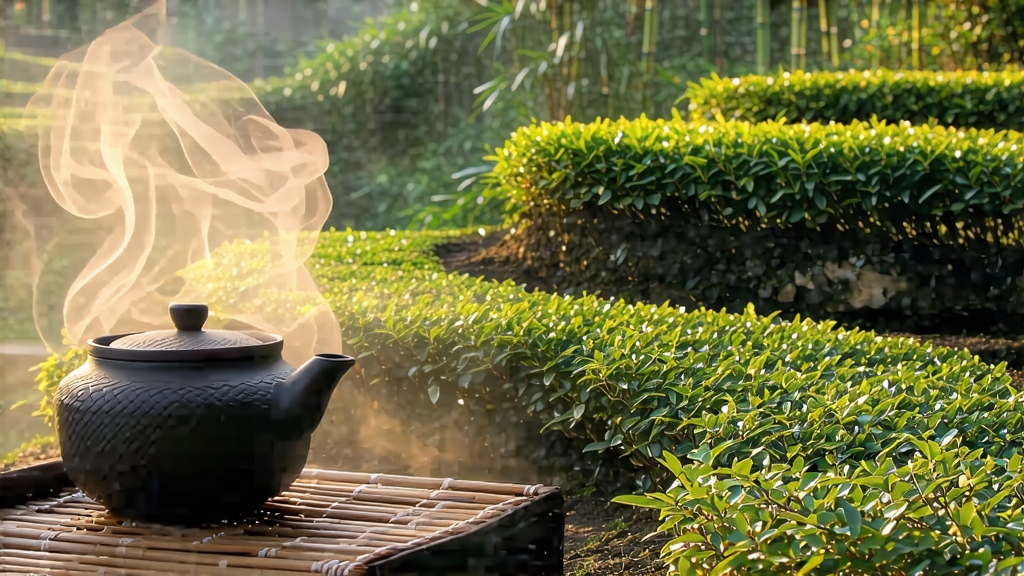
Tucked high on the mist-laden slopes of Mt. Meng in Sichuan province, Meng Ding Huang Ya has been quietly radiating a soft golden glow for more than twelve centuries. To most Western drinkers “yellow tea” sounds like a marketing alias for light oolong or a quirky green, yet this rare category owns a flavour realm that sits exactly between the two: the grassy clarity of spring pluck mellowed by a whispered oxidation so gentle it is called “sealed yellowing.” Among the handful of authentic yellow teas still crafted in China, Meng Ding Huang Ya—literally “Meng Peak Yellow Bud”—is the most aristocratic, once reserved for Tang and Song emperors and now protected under China’s National Intangible Cultural Heritage list. Understanding its journey from imperial tribute to fragile craft offers a master-key to the aesthetics of Chinese tea: restraint, patience, and the pursuit of umami-laden serenity.
History: from elixir of immortality to endangered art
Mt. Meng, known since the Han dynasty as “the fairy mountain,” was believed to be the gateway to the Daoist western paradise. Legend credits the Daoist master Gan Shi with planting the first tea bushes here in 53 BCE as an offering to the gods. By Tang times (618-907 CE) the tea was already freighted down the Min River to Chang’an, where court poets praised its “honeyed dew that washes the dust from the mind.” A Song dynasty tax register lists 560 kilograms of “Meng Peak Bud” delivered annually to the palace, each leaf required to be “the size of a sparrow’s tongue, the colour of ivory, the scent of apricot blossom.” When Ming emperors shifted their taste to loose leaf, the mountain monks adapted, inventing the slow yellowing process that distinguishes the tea today. Production peaked under Qing Guangxu (r. 1875-1908) but collapsed during the Republican era; by 1950 fewer than thirty families remembered the full craft. A state-sponsored revival in 1978 saved the cultivar, yet annual yield still hovers below 300 kg, making authentic Meng Ding Huang Ya rarer per ounce than silver.
Micro-terroir: why the mountain makes yellow possible
Mt. Meng sits at 29.9° N, 1,450 m above sea level, squarely in the Sichuan basin’s cloud factory. Year-round humidity averages 86 %, solar irradiation is only 65 % of that at sea level, and diurnal temperature swing can exceed 15 °C within a single spring day. These conditions slow photosynthesis, stockpiling amino acids—especially L-theanine—while keeping catechins low. The local micro-cultivar, “Meng Ding Xiao Ye Zhong,” has evolved thick cuticles and sparse stomata to breathe in perpetual fog; its spring bud set is unusually small (one bud and one leaf weigh barely 0.12 g) yet packed with soluble sugars. The result is a raw leaf that can withstand the 48-hour “men huang” sealed yellowing without collapsing into sourness—something impossible for greener cultivars of Zhejiang or Yunnan.
Craft: the choreography of controlled breath
Picking begins in the lunar term “Grain Rain,” when 60 % of buds reach “parrot-beak” curvature. Only the standard “one bud, one unfolded leaf” is plucked before 9 a.m., while dew still glistens. The first step is shaqing—kill-green—yet here the pan temperature is kept at a mere 120 °C, 30 °C cooler than for Dragon Well, preserving internal enzymes for the later yellowing. After five minutes the leaves are rolled under bamboo mats for 10 minutes to fracture cell walls without expressing juice, then immediately swaddled in thick cotton cloth. This bundle enters the “men huang” chamber, maintained at 28 °C and 75 % RH, where the leaf respires anaerobically. Every two hours the cloth is unwrapped to re-oxygenate; the cycle repeats six times over two nights. During this covert oxidation chlorophyll degrades into pheophytin, catechins dimerise into theaflavins, and a popcorn-like aroma drifts out—an olfactory cue that the tea has “turned yellow.” Finally the leaf is baked over charcoal embers at 60 °C for 40 minutes, then rested for seven days so residual moisture migr